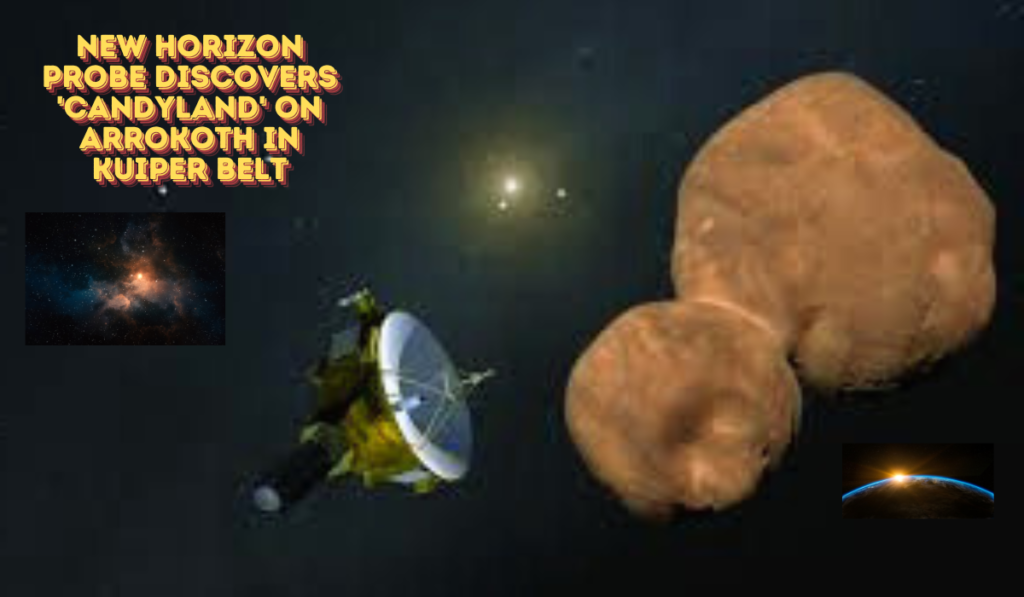A recent study has uncovered a fascinating object in the Kuiper Belt, located 4 billion miles from Earth. This discovery is helping scientists understand more about the evolution of our solar system and possibly even Earth.
What is the Kuiper Belt?
- Location: The Kuiper Belt is a region of icy objects beyond Neptune’s orbit.
- Contents: It includes Pluto, many known dwarf planets, and some comets.
- Shape: It is doughnut-shaped.
Discovery of Arrokoth
- Object Name: The object is named Arrokoth, previously known as 2014 MU69 and Ultima Thule.
- Nickname: Scientists have nicknamed it “Sugar World” because it contains complex sugars.
New Horizons Probe
- Launch: The New Horizons probe was launched in 2006 by NASA.
- Mission: It first captured images of Pluto and then flew by Arrokoth in January 2019.
- Record: The probe set a record by exploring the farthest object ever visited by a spacecraft.
Study Findings
- Publication: The study was published in the Proceedings of the National Academy of Sciences.
- Organic Molecules: Arrokoth contains significant amounts of organic molecules.
- Color: The object has a distinctive reddish color due to the presence of complex organic molecules, such as methanol, water ice, and carbon-rich compounds.
Significance of the Findings
- Chemical Process: When methanol on Arrokoth is exposed to cosmic rays, it generates sugars like ribose and glucose.
- Evolution Insight: This indicates that Arrokoth underwent chemical processes that transformed simple molecules into more complex ones over billions of years.
- Solar System Evolution: Understanding these processes helps scientists learn about the early solar system and the potential origins of life on Earth.
Quotes and Insights
- Alan Stern, Southwest Research Institute: “We set a record! Never before has a spacecraft explored something so far away. I mean, think of it. We’re a billion miles further than Pluto, and now we’re going to keep going into the Kuiper Belt” (Space.com).
Conclusion
The discovery of Arrokoth in the Kuiper Belt and its complex organic molecules provides valuable insights into the chemical evolution of the solar system. This groundbreaking research by the New Horizons probe expands our understanding of distant celestial objects and the potential for life beyond Earth.

